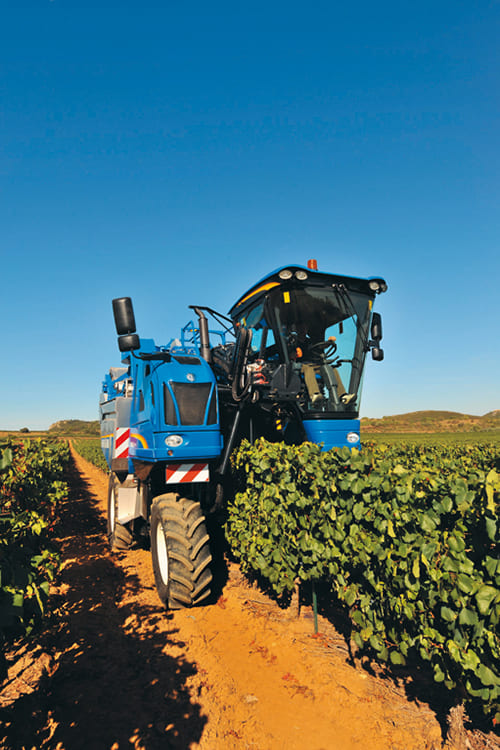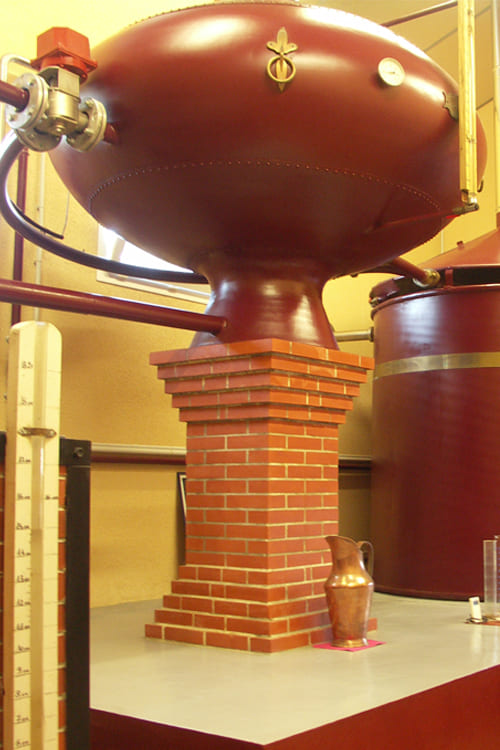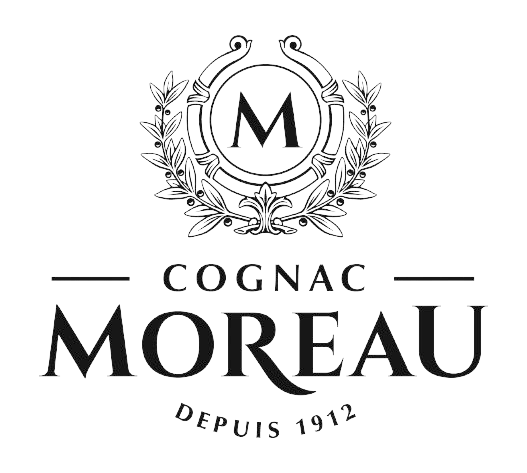Harvest
The harvest begins at the end of September / beginning of October. The choice of the date marking the start of the work depends on the state of ripening of the grape (veraison). The custom is that the harvest begins 40 days after veraison, which is determined according to the consistency of the grapes. It should also be determined which pieces of vines will be harvested first. The order of harvest is fixed by measuring the degree of sugar in the grapes using a mustimeter or a refractometer. With a view to making Pineau, we are looking for juice with a concentration of more than 10 °. The harvest is done by machine. The harvest is the culmination of an entire year of work and it lasts about three weeks.
Steps :
- Grape harvest = 4 hectares per day;
- Transport of the harvest by skips;
- Pressing of the grapes;
- Once pressed, take the direction of our vats;
- There remains the grater (the skin of the grape) which will serve as an organic input for the soil;
- For Cognac, the grape juice remains in these vats for 8 days when it must become wine. This transformation must be done either naturally, this phenomenon is called alcoholic fermentation: sugars are transformed into alcohol. These two stages of pressing and fermentation are decisive for the quality of the future eau-de-vie. These wines obtained after two weeks of fermentation have a content of between 8% and 11% vol. ;
- For Pineau, an additional step is maceration: the juice must macerate with the skin between 24 and 36 hours. Once the maceration is done, mix with the Cognac brandy. this operation is called mutage.

Distillation
An Alembic is a device intended for the separation of products by heating then cooling. It allows distillation. Once the grape is pressed and then fermented it is ready to be transferred to the still for distillation. A particularity of cognac, it is obtained with a double distillation. Our Fin Bois terroir with clay-limestone soils allows us to develop eaux-de-vie with rounded and consistent notes in the mouth.
An Alembic is generally made up of 5 elements:
- The cucurbite or body or boiler in which the liquids to be distilled are located, is heated directly on a hearth or serves as a water bath;
- The tent covers the boiler and is provided with a conical tube in which the vapors will rise;
- The swan neck, tube originally conical and in an arc of a circle (hence the name) then cylindrical and rectilinear on more modern devices, which brings the vapors into the condenser;
- The wine warmer is placed between the cooler and the cucurbite, after the swan neck. This is a tank through which the pipe leading to the cooler (this pipe turns into a coil when it arrives at the cooler). It is filled with must to be distilled during the next pass, which allows it to be heated and thus save time and avoid wasting energy;
- The coil or condenser, a helical tube with a vertical axis on the walls of which the vapors condense by the effect of cooling due to the liquid circulating around. The oldest devices had a more or less inclined rectilinear condenser.

